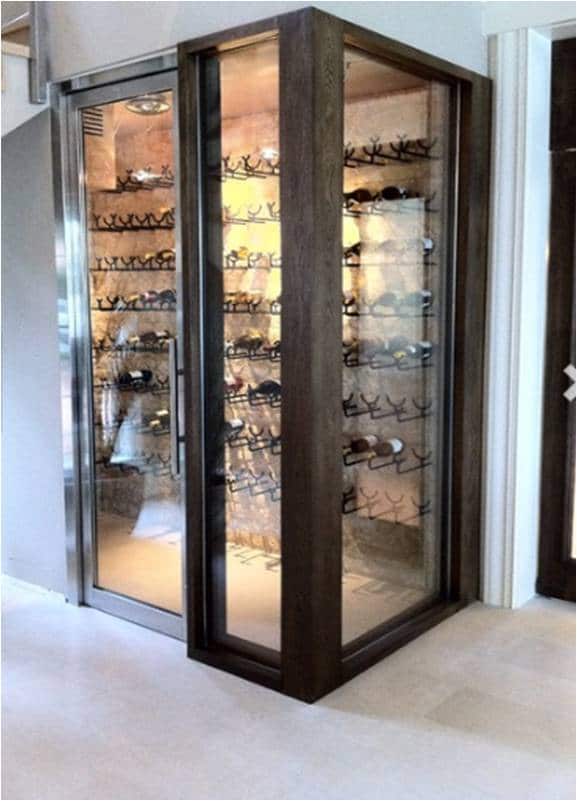
They can take up a small portion of a wall or cover the entire wall. They can be permanently installed and custom-built onto the wall, or you can purchase a prefabricated model. These can be installed anywhere and are best for red wines, which do not require refrigeration. While not technically a wine cellar, a wall wine rack can be a good solution if you only keep wine for parties and entertaining. Wooden wall wine racks cost between $500 and $3,000 on average. Below are the average costs to build wine cellars in various areas, based on the average size of each location: The best spaces are basements and underground areas, but you can convert other areas into a wine cellar if desired. Technically, you can put your wine cellar anywhere that you can keep cool and shielded from the sun and vibration. However, they require constant climate monitoring for proper results. Active wine cellars are the most common type installed in the U.S., allowing the most customization and freedom of placement.
#Wine cellar doors windows
A second-floor room might have the insulation needs, but you may have windows to eliminate and larger cooling systems to install. Basements need smaller cooling units but often need more work to finish. Costs are typically determined by how finished the area is and its location. It can be a dedicated addition, added to a closet or butler’s pantry, or most commonly installed in a basement. Active Wine CellarĪn active wine cellar can be installed anywhere inside your home. Even if the power goes out, the cellar stays cool so that you do not need to worry about the room heating up. However, once they are up and running, they have virtually no maintenance costs. Construction costs can be higher than in active systems because you need to excavate, reinforce, and determine an entrance below ground. This wine cellar needs to be located in a climate where the area can stay cool and humid while also below the frost line. The walls are usually made of earth, so the area stays naturally cool. Passive wine cellars are typically installed underground. Build costs are lower than passive systems in this case, but the climate control systems do not need to be as large. The lowest cost systems are hybrid - installing an active system in an already cool and humid area, such as a basement. This tends to make the two areas balance out in cost. An active system may be less labor-intensive and can be placed anywhere but has higher costs for the added climate control. This is because building a passive system is more labor-intensive, requiring it to be deep underground. Active systems require you to control the climate with outside help.Ĭosts for the two systems fall into roughly the same range. Passive systems use natural climate control to keep the wine in a cool, humid area. Wine cellars can be loosely grouped into two categories - passive and active. basement wine cellar with an adjacent bar and tasting room. wine closet retrofitted from a butler’s pantry, while the high cost is $180,000 for a 300 sq.ft. This project’s low cost is $7,500 for a 25 sq.ft. basement wine cellar with climate control, finished floors and walls, and an insulated door. Most people pay around $33,750 for a 75 sq.ft. The national average range to build a wine cellar is between $15,000 and $60,000.


These variations mean that there is a big difference in costs. They can be built in many styles and sizes, depending on your needs and space. While you can use a wine wall, wine rack, or wine fridge for short-term wine storage, a wine cellar is meant for serious collectors and long-term use. For anyone who wants to begin seriously collecting and storing wine, a wine cellar is a must. Controlling for light, humidity, and vibration are crucial to the wine aging process. These wines grow in complexity over time and require a specific setting. While most wine is purchased and consumed within a short time, some wines are meant to age.


 0 kommentar(er)
0 kommentar(er)
